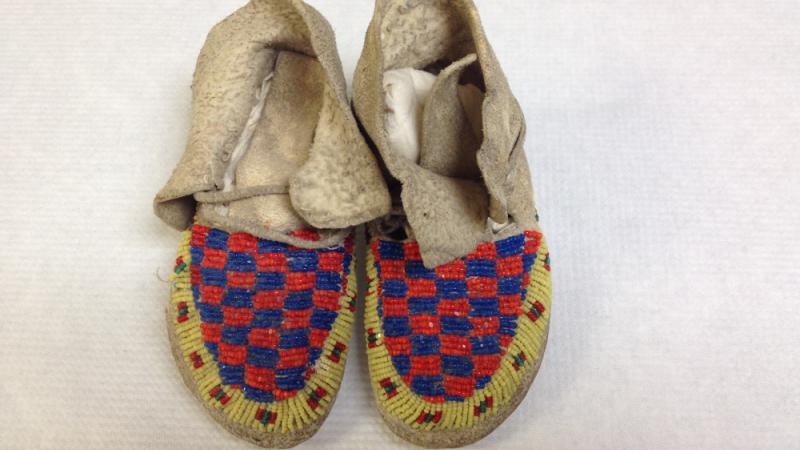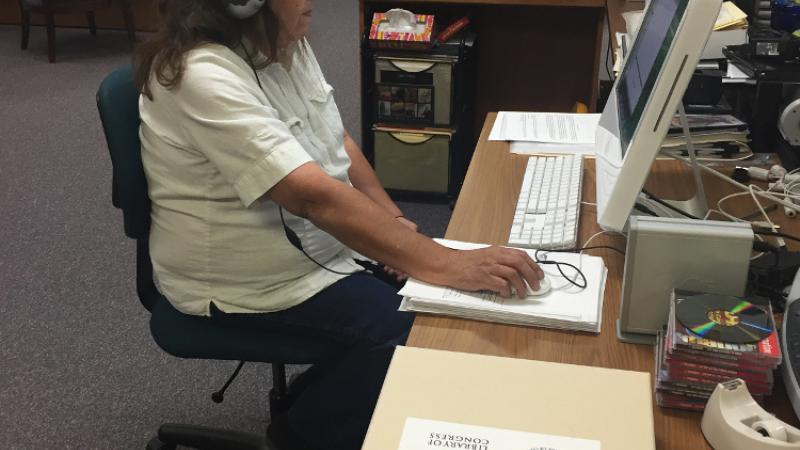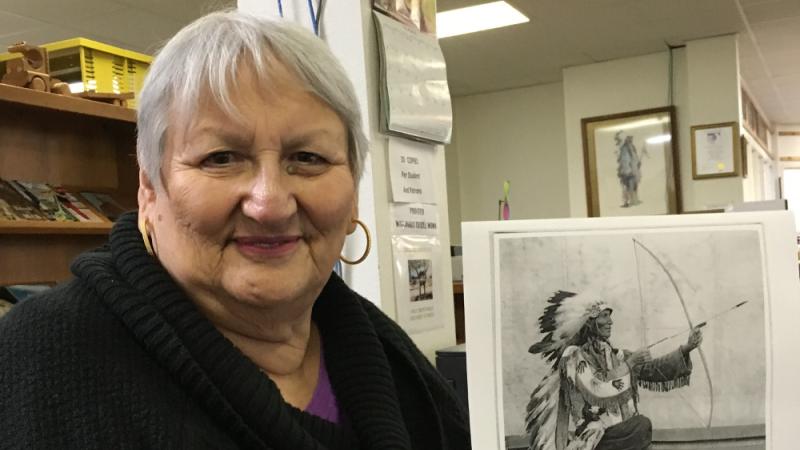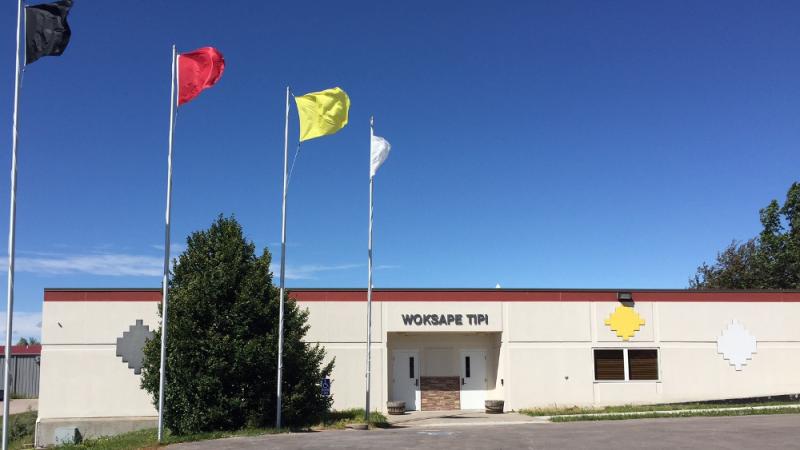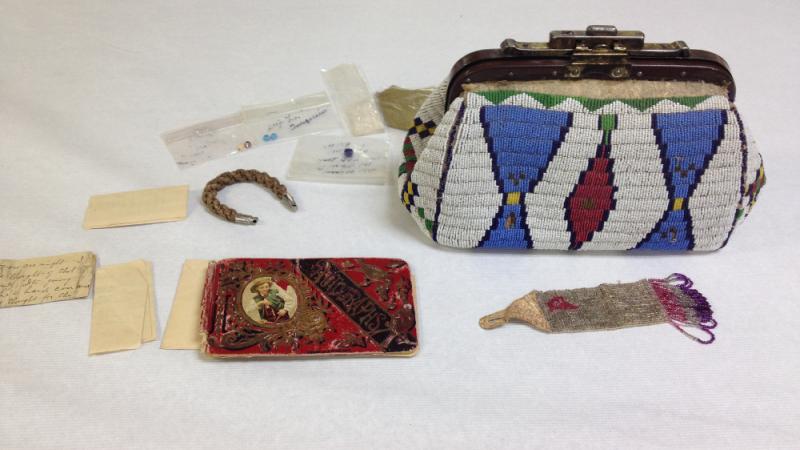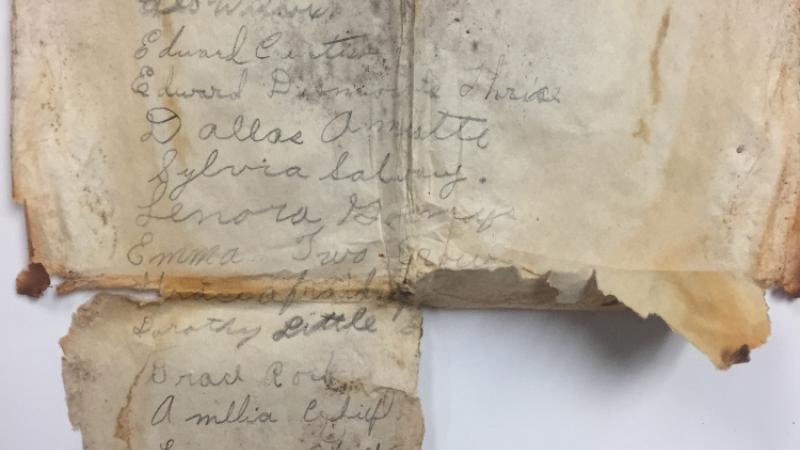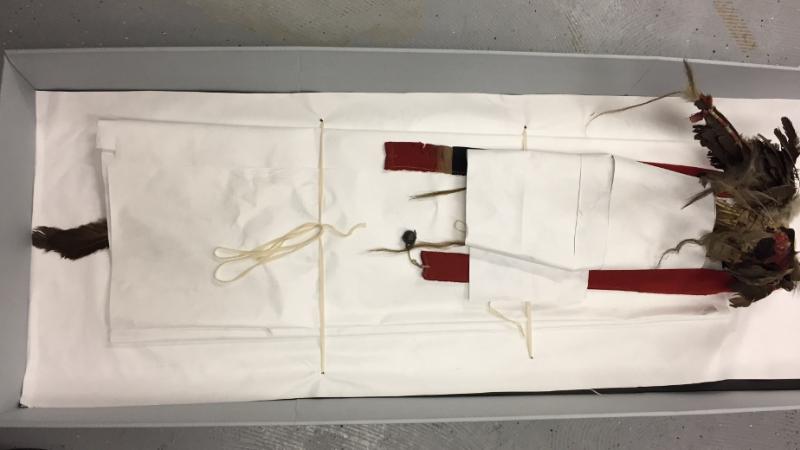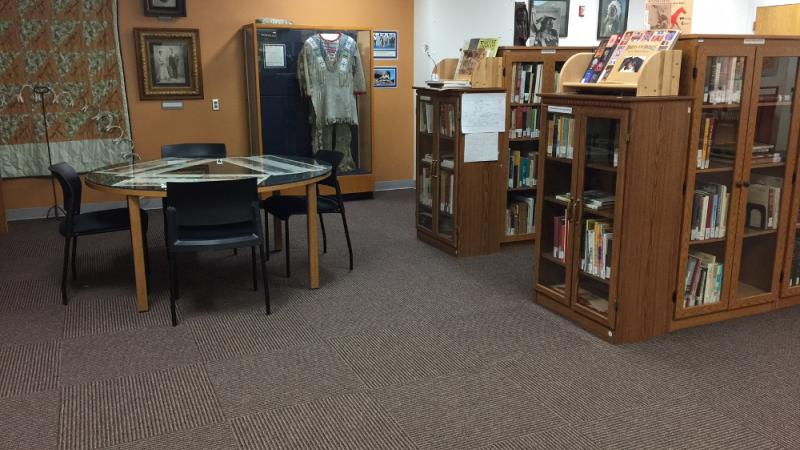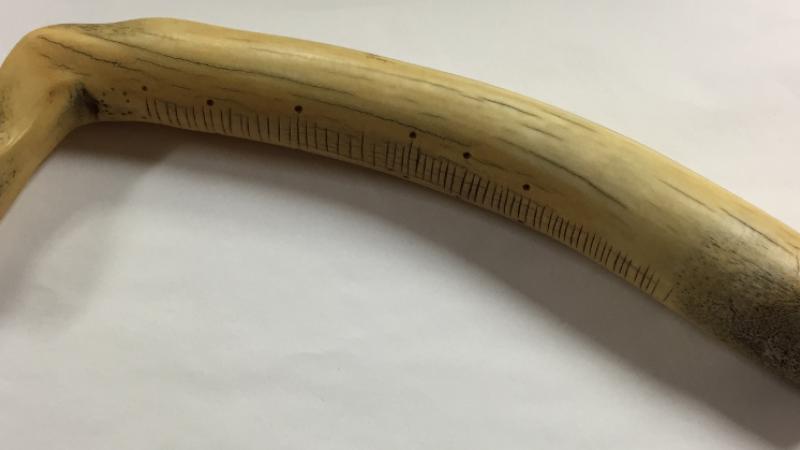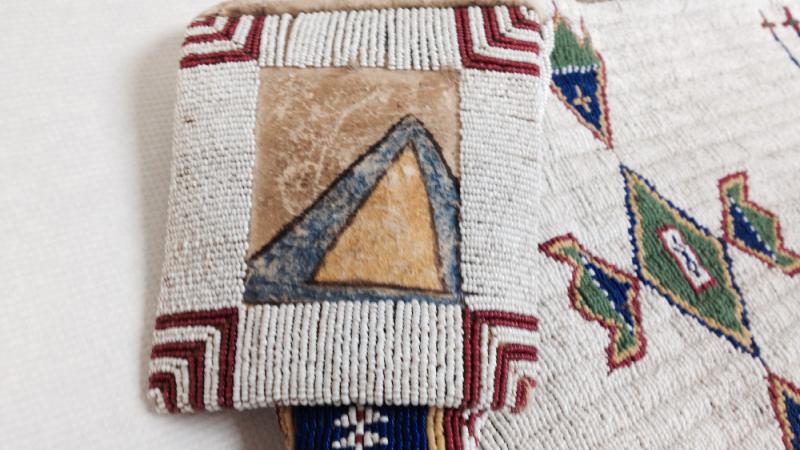50 States of Preservation: Oglala Lakota College in Kyle, South Dakota
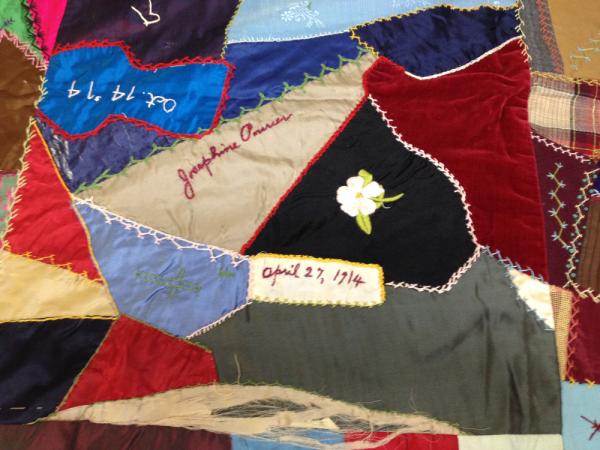
The quilt square was part of a quilt belonging to the Manderson Women’s Sewing Club made between 1913 and 1915 by members of the Manderson community in the Wounded Knee District. Josephine Pourier was Hazel McGaa-Cuney’s grandmother.
Image courtesy of Woksape Tipi Archives, Oglala Lakota College.

The quilt square was part of a quilt belonging to the Manderson Women’s Sewing Club made between 1913 and 1915 by members of the Manderson community in the Wounded Knee District. Josephine Pourier was Hazel McGaa-Cuney’s grandmother.
Image courtesy of Woksape Tipi Archives, Oglala Lakota College.
This feature is part of a series we call “50 States of Preservation,” in which we are touring small and mid-sized museums, libraries, historical societies, and other repositories across the country to show how they are helping to preserve the nation’s cultural heritage. Read other entries in the series here.
The concept of Wolakolkiciyapi is a powerful one at Oglala Lakota College. It means learning Lakota ways of life in the community. Wolakolkiciyapi is a central philosophy of the college located on the Pine Ridge Indian Reservation, which spans 3,500 square miles in South Dakota and is home to around 35,000 Oglala Lakota (Sioux). Woksape Tipi Archives houses unique language, cultural, and historical materials of the tribe and uses these powerful artifacts to reach the decentralized reservation districts and beyond.
Archivist Tawa Ducheneaux explains that the archive is part of Ehanni Taŋhaŋ Takuku Uŋpatanpi, or “Saving things from Long Ago for the Future” in order to tell a more complete story of the Lakota. “We feel a tremendous obligation to provide access to the records and special collections pertaining to Oglala people and the research community that has supported the work we do to continue to try and provide local access to our diverse collections,” she says.
With NEH support, preservation expert Terri Schindel assessed 2,000 linear feet of records, which include administrative records of the college and the Oglala Sioux, plus manuscripts, microforms, audiovisual materials, photographs, maps, blueprints, posters, and publications. Based on the assessment report, the archive will develop a strong plan for approaching the varied needs of these diverse collections and invaluable cultural resources.
The Woksape Tipi Archives provides access to many different kinds of materials. Genealogy and business records, correspondence, minutes, and reports reveal aspects of Oglala family history and the story of the Oglala Lakota people. Newspapers, many of them local and not preserved elsewhere, cover events on the Pine Ridge Reservation during the occupation of Wounded Knee by the American Indian Movement. Copies of the Wounded Knee Legal Defense Committee Newsletter also document events on the reservation during that turbulent era that grew out of the Civil Rights Movement.
The archive has a wealth of material artifacts as well. A large collection of locally beaded and quilled artwork includes a cradleboard, women’s regalia, a doctor’s bag, and moccasins created between 1880 and 1950. Recordings of traditional artists are an invaluable cultural resource and available for local access by community members and students. Audio collections have long been locally produced by tribal members concerned with preservation of traditional ways and include recordings of Lakota social, honoring, and prayer songs featuring noted singers and tribal leaders.
In fact, in 2016 the Woksape Tipi Archives received copies of recordings held at the American Folklife Center at the Library of Congress as part of a digital repatriation. They were collected on wax cylinder and reel-to-reel tape between 1896 and 1947, and, according to Archivist Ducheneaux, likely include the earliest audio recordings of Oglala people.
There’s even a time capsule, dating to 1931 and assembled during the construction of Pine Ridge School (originally Oglala Community School). Ducheneaux says that what’s left is in poor shape, but “with the assistance of the NEH Preservation Assistance Grants for Smaller Institutions, technical support was provided to help guide us to work with the heavily rusted and fragile papers contained within.”
Ducheneaux knows first-hand how empowering access to primary source materials can be. Engaging with these materials enables Pine Ridge students, educators, and community members to experience and connect with their own history locally. Preserving the collections also supports powerful new research on the ways of the Lakota, which resonates well beyond the community.
In every state, NEH supports organizations that preserve humanities collections. Preservation Assistance Grants for Smaller Institutions (PAGs) fund projects that help safeguard photographs, letters, documents, prints, moving images, sound recordings, maps, drawings, artworks, textiles, furniture, and artifacts, making them available for future generations. These collections help researchers, educators, and members of the public better understand the complex stories of the various cities, towns, and tribal groups that make up our nation.
Since 2000, NEH has made nearly 2,000 Preservation Assistance Grants to small and mid-sized organizations to preserve and care for their humanities collections. In all 50 states, the District of Columbia, and Puerto Rico and the Virgin Islands, PAG awards have funded preservation assessments, purchase of shelving, environmental monitoring equipment, and preservation supplies, and training for staff. Organizations in all states and U.S. territories are eligible to apply, and the program encourages applications from those new to NEH. The next application deadline Preservation Assistance Grants for Smaller Institutions is May 1, 2018. If you have any questions about this grant program, please contact us at @email or 202-606-8570.
